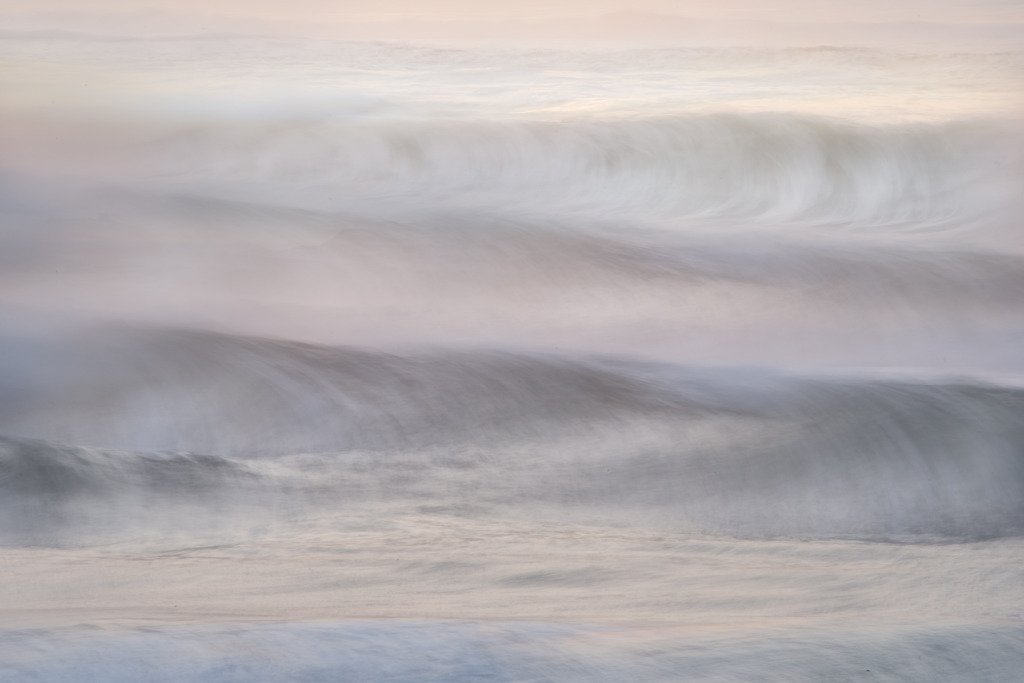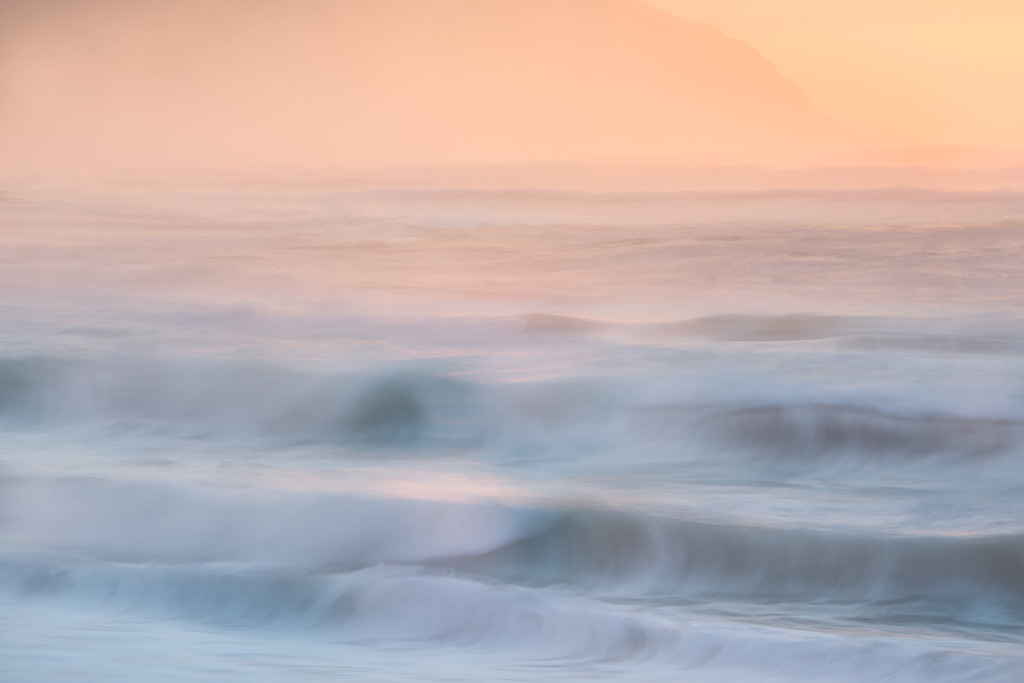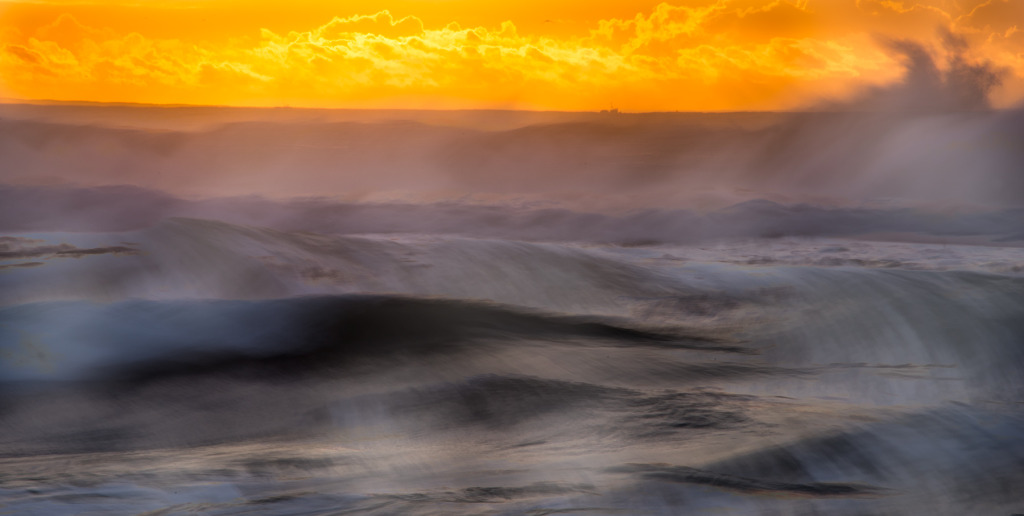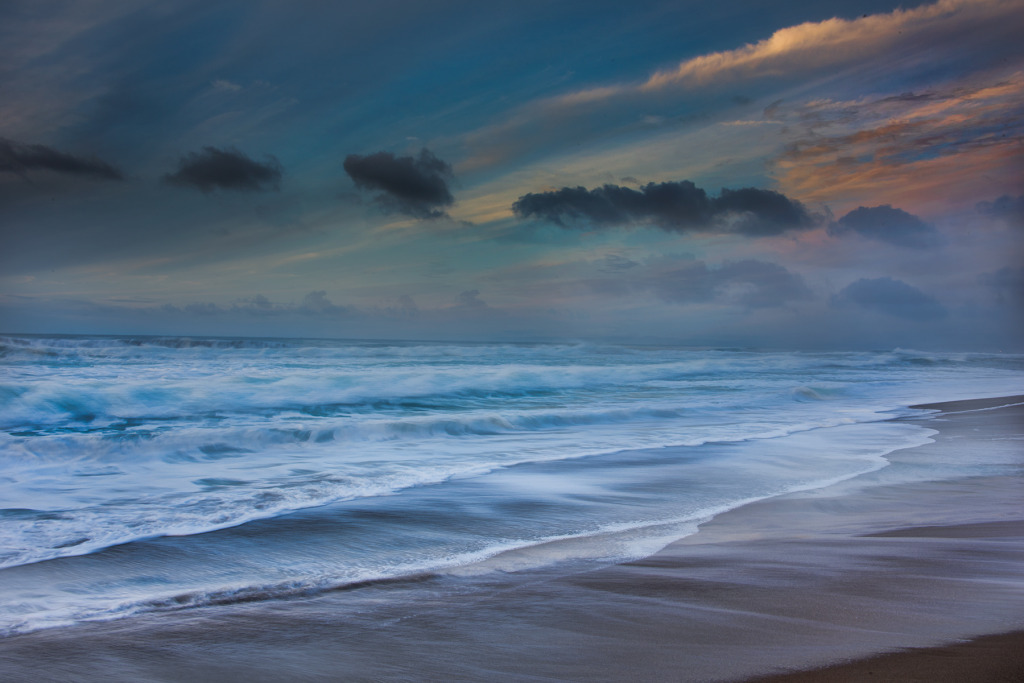Waves are a fundamental form of the universe. Light and sound come in waves. Wave formation underlies much that we know, and don’t know, about the universe around us. As manifest in our earth’s ocean, with the forces of gravity, topography and tide made real, they are both orderly and chaotic. Waves have a certain regularity, but no two waves are alike.

I like to photograph waves because they are a fundamental form that underlies what we know as physical reality. A moving wave also gives the photographer the opportunity to exercise the important creative controls inherent in a camera: focus, aperture (depth-of-field), shutter speed (duration of the exposure) and sensitivity (ISO).

Since waves are constantly in motion, what first comes to mind in terms of the camera’s controls is shutter speed. Shutter speed is badly named, because it refers to a duration of time, not a speed: the length of the exposure, in other words how long the photosensitive medium (the sensor) is exposed to light.
A long shutter speed in minutes causes waves to blur and become completely smooth. A very fast shutter speed, measured as a fraction of a second, such as 1/1000 of second, captures an instant of time, and stops the wave in its tracks in all its foaming glory in the moment before it peaks and crashes.

In many ways the most interesting shutter speeds represent an intermediate duration of time: long enough for the wave to blur so that its underlying shape becomes apparent, but short enough to register some of the details of the wave in its progress to the shore. The length of these shutter speeds depends upon the speed of the wave, but tend to be longer than 1/30 of a second and faster than ten seconds.

The wave images shown here were made on the great beach of Point Reyes, California, walking south from the South Beach parking lot in the late afternoon and at sunset, during a workshop I was giving about Photographing Waves.
My camera was on a tripod: even if the waves are in constant motion your camera doesn’t have to be. Each image is a “confection”: a composite, since I always bracket my exposures and capture every piece of an image that I think I might need. There’s always time enough when I am at my computer to figure out how to put the pieces together!
Pingback: Falling Water
Pingback: My Best of 2014
Pingback: Face of the Deep
Pingback: In a Blue Hour
Pingback: Five Minute Wave Exposures